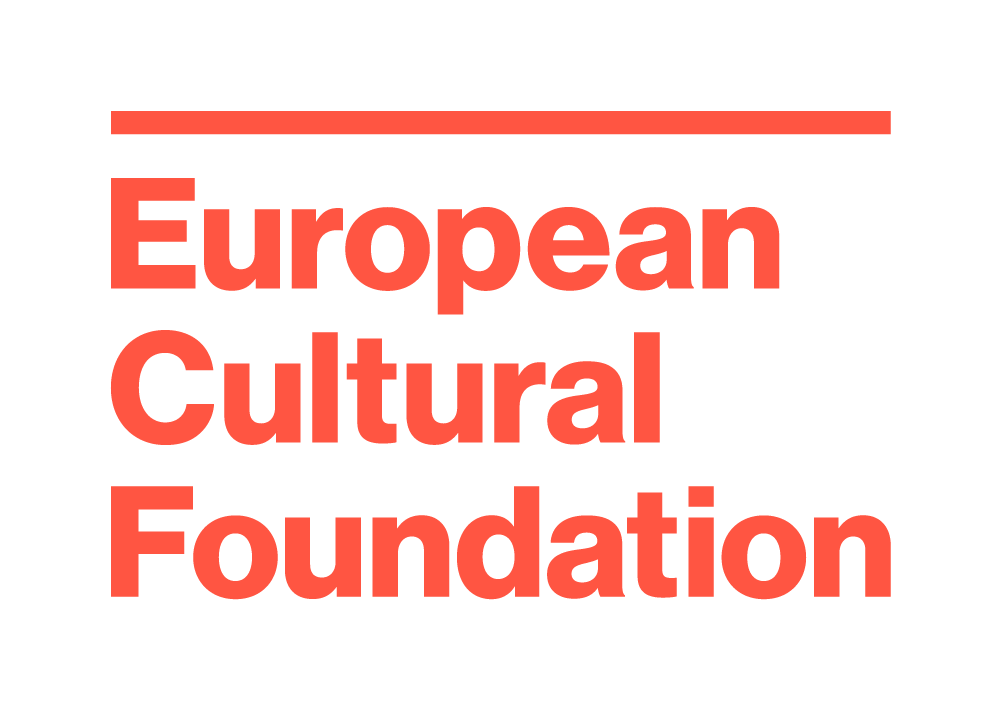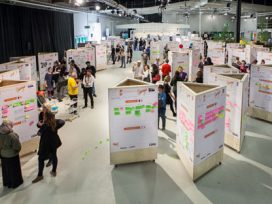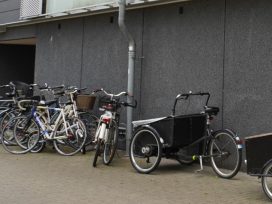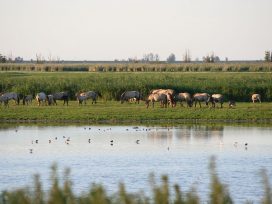When commoning strategies travel
(In)visible cities, clandestine migrations and mobile commons
Commoning strategies are often improvised even in the liminal spaces that emerge in the cracks of Fortress Europe, says urban anthropologist Jayne O. Ifekwunigwe. In a text based on her September 2015 talk at the ECF’s annual Idea Camp, Ifekwunigwe calls for a new commons that embraces both the mobile and the settled.
When a chicken arrives at a new dwelling place, it first stands on one leg and watches what other chickens do. It needs a hand to turn the forest into a dwelling place.
Igbo Proverb
Oral traditions, such as storytelling, are at the heart of most African cultures. In Things Fall Apart, the classic novel by the late Chinua Achebe, he observes: “Among the Igbo, the art of conversation is regarded very highly, and proverbs are the palm-oil with which words are eaten” (1958: 5). Beginning my talk with an Igbo proverb is a way to both pay homage to my ancestors and heritage as well as to frame my critique of the commons as it pertains to clandestine migrations and invisible cities. This particular proverb speaks to African conceptions of the commons and what historian Peter Linebaugh refers to as commoning. We can build a shelter by ourselves, but we need more than two hands to make a home. As someone with firmly planted African roots, but whose branches have stretched to embrace Europe and North America, I find the critical engagement with the commons and commoning both fascinating and ironic. That is, those of us situated in the individual-oriented industrial global North have to learn the ways of commoning. We have become more connected in cyberspace but we are increasingly disconnected from each other in non-virtual urban spaces. While preparing this talk, the recent collection Build the City: Perspectives on Commons and Culture jointly edited by the European Cultural Foundation, ECF Labs and Krytyka Polityczna was extremely useful. I particularly loved the example from Agnieszka Winiewska’s essay entitled Culture WITH people, not just For people. She recounts:
I am writing this at my cousin’s house. He has small children. In his backyard, there is a trampoline, a large one, fitted with a mesh enclosure, for safety. I can see an identical one roughly a metre away, in a neighbour’s backyard, and another one, a little farther off, at the neighbour’s neighbours. Each child is jumping on its own trampoline. Will those children want to do anything together in the future? Why won’t their parents get together and buy one trampoline for all of them to share? Would they be able to agree over whose backyard should have the trampoline and how to split responsibility of taking care of it between them? Or, rather, no one would like to keep the trampoline in case a child should get hurt and then whose fault would it be? This is the kind of society we are building: lonely children on their trampolines. And only a few children at that. Most will only be able to watch from behind the fence.
On the other hand, in the Global South, collective action, cooperation and community are still the glue binding cultures together. In spite of both the legacies of European colonization processes as well as more recent globalization influences, the primacy of the extended family, the collective and community have survived. In kinship terms, we anthropologists refer to this as the privileging of consanguineal (blood relations) over conjugal (marital ties). This notion of collectivity and commoning is even embedded in the translation of my Igbo surname. The literal translation of “Ifekwunigwe” is “people in a multitude stand together”. The Anglicized version is “strength in unity, united we are strong”.
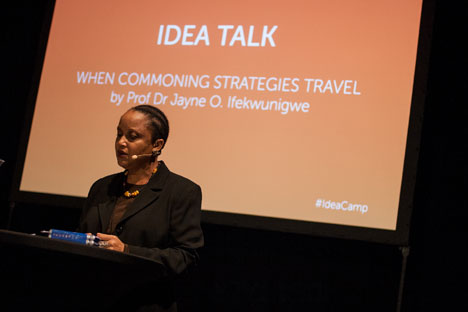
Jayne O. Ifekwunigwe delivering her talk at the ECF’s Idea Camp in Botkyrka, Sweden, in September 2015. Photo: Julio Albarran.
In their book Mobile Commons, Migrant Digitalities and the Rights to the City, Nicos Trimikliniotis, Dimitris Parsanoglou and Vassilis Tsianos refer to the “mobile commons” as a useful way to describe the praxis of clandestine migration, the claiming of space, and the transitory making of home:
The mobile commons as such exist only to the extent that they are commonly produced by all the people in motion who are the only ones who can expand its content and meaning. This content is neither private nor public, neither state-owned nor part of civil society discourse […] rather the mobile commons exist to the extent that the people use the trails, tracks or rights and continue to generate new ones as they are on the move. (2015: 53)
However, I would sound a cautionary note. That is, we cannot assume that what the authors refer to as “new socialities, new spatialities and new citizenship modes” (2015: 7) are not the organic product of the dynamic conditions of clandestine migration. Instead, I would argue that whether Sudanese, Eritrean, Ethiopian, Afghani or Syrian, clandestine migrants’ tendency towards cooperative and collective action or “we” is an integral part of their cultures of origins, which is transported with them as they travel. Their monolithic rebranding as “refugees” and “economic migrants” defies this reality and erases any complex and diverse subjectivities prior to the migratory moment.
In my talk, by focusing on the ways in which a multiethnic and transnational group of clandestine migrants build community in the liminal border space of the “New Jungle” in Calais, France, I will illustrate the dialectical tension between commoning strategies predicated on the transgression of physical, cultural and ethnic borders with the boundary maintenance practices of the commons as exemplified by fences, surveillance and policing.
Untangling terminology
Before I begin, it is important for me to clarify certain terms and provide a broader framework for historical and contemporary migration processes. “Refugee”; “economic refugee”; “asylum-seeker”; “bogus asylum-seeker”; “illegal migrant”; “irregular migrant”; “undocumented migrant”; “clandestine migrant”: these are all confusing terms that circulate in media, academic, political and popular discourses. This collision of terms stems from the fact that in the twenty-first century, if one is not a citizen of an EU country, it is extremely difficult to migrate anywhere in Europe. One must either meet the limited and stringent asylum criteria for refugee status outlined by the 1951 UN Convention or have highly skilled labour to sell. However, the desire for freedom and a better life knows no boundaries and those who cannot enter Europe legally will do so “by any means necessary”. For purposes of clarity, whether asylum-seekers or illegal migrants, I refer to all migrants in transit as “clandestine migrants” to signal the means by which they are trying to enter Europe as well as their liminal status. Liminality is an anthropological term coined initially by Arnold Van Gennep and then expanded by Victor Turner to refer to the transitional phase between life stages. It has since been adapted by others, particularly urban geographers, to characterize communities and cities that are literally and figuratively in flux. For example, Antonia Noussia and Michal Lyons suggest:
The temporariness and transitory character of the migrants’ experience leads to the creation of liminal spaces, intimately associated with personal moments and movements of transformation, “moments of discontinuity in the social fabric, in social space and in history” (Shields 1991: 83), when people are in transition from one stage of life to another. This state of “between-ness” is particularly associated with recent migrants’ experiences of rapid change. (2009: 619)
We can differentiate newer contemporary clandestine migrants from earlier migrants, by their legal status as citizens. I refer to this older cohort as “migrant-settlers”.
Commoning strategies and the mobile commons in Calais’ “New Jungle”
[…] and then it becomes a full-size city, enclosed within the earlier city: a new city that forces its way ahead in the earlier city and presses it toward the outside
(Calvino 1972: 129).
This quotation is from novelist Italo Calvino’s masterful meditation on Invisible Cities and could very easily describe a microcosm of city dwelling that has developed on the outskirts of Calais. Sitting on 40 acres of land that was formerly reserved for a children’s holiday camp, over 3000 clandestine migrants have constructed a different kind of camp, which both residents and locals refer to as “the New Jungle”. Although its population is transitory, its fixtures are increasingly permanent. With assistance from local authorities, NGOs and volunteers, residents have constructed makeshift shelters and attempted to recreate some of the comforts of home.
In “the New Jungle” one can find: a library, three schools, a disco, several mosques, a church, an art gallery, a barber, ten to 12 food outlets and shops, including a bicycle repair shop, as well as street lighting, wooden toilet blocks, water points and a separate bricks and mortar shelter for women and children. Residents are also provided with one hot meal a day. For the lucky, the “New Jungle” is a transit zone. Their final desired destination is either the UK, which they hope to reach by jumping on a moving train or hiding in the back of a lorry, or France itself for those who are waiting to claim asylum. With stepped up security and a new 13 foot high barbed wire fence that has been built between the motorway and the “New Jungle” in order to prevent these attempts, many migrants remain stuck in this liminal space. The “New Jungle” is becoming Fortress Calais. But in August 2015, the news channel France 24 broadcast a report entitled “Building a community in Calais’ Jungle”,1 which illustrates the ways in which this chaotic, precarious and temporary controlled space has been transformed into a “mobile commons”; that is, in the words of the authors who coined the term, where “the roughness of the street, the kind of micropolitics of encroachment of space is turned into ‘commons'” (Trimikliniotis, Parsanoglou and Tsianos, 2015: 4).
Ben Okri, the Nigerian novelist, once said “the most authentic thing about us is our capacity to create, to overcome, to endure, to transform, to love and to be greater than our suffering”. (1999: 61). In addition to food, shelter, freedom and love, as humans, I too believe that we need to maintain a connection to the aesthetic to truly feel alive. Artists are both commentators on their societies and visionaries existing on a higher plane outside of societal constraints and norms. This duality is liberating and enables the creator to both provide a critique of the world they inhabit as well as literally conjure another more beautiful reality into being. In the “New Jungle”, the common cause of clandestine migration has brought disparate groups of people with differing religions, languages and cultures together. The language of art, in the form of painting, music, dance and literature, is universal. In the “New Jungle”, the making and celebration of the creative appears to be an important and the latest phase in the formation of community. Embracing beauty, in all its aesthetic forms, facilitates the transgression of cultural boundaries and enables a temporary transcendence of life’s everyday struggles.
“Mending Wall[s]”: Boundary maintenance, a commons critique and the promise of a new mobile/settled commons
He says […] “Good fences make good neighbors.”
Spring is the mischief in me, and I wonder
If I could put a notion in his head:
“Why do they make good neighbors? Isn’t it
Where there are cows? But here there are no cows.
Before I built a wall I’d ask to know
What I was walling in or walling out,
And to whom I was like to give offence.
Something there is that doesn’t love a wall,
That wants it down.
Robert Frost (1914: 12)
“Good fences make good neighbors”. I am sure that you are all familiar with this saying. What is probably less familiar is Frost’s reinterpretation in his 1914 poem “Mending Wall”. Rather than advocating building fences as a mechanism for the preservation of good neighbourly relations or containing cows, Frost is in fact suggesting that walls should be dismantled: “Before I built a wall I’d ask to know/ What I was walling in or walling out,/ And to whom I was like to give offence./ Something there is that doesn’t love a wall,/ That wants it down” (1914: 12).
From Hungary to France to Ceuta and Melilla, the building of fences in order to wall out clandestine migrants and wall in local citizens has been one of the most popular solutions to the European “migration crisis”. Fortress Europe’s borders remain permeable for the transnational flow of capital, commodities and information, but not people. Across the EU, clandestine immigration control remains at the epicenter of political and popular debate. The rallying cry from the Right is contain the Others already within and keep those Others out! The racialized, gendered, generational and political dimensions of clandestine land and sea protest movements force us to rethink what constitutes free will, agency and victimization. The precarious nature of clandestine migrations of desperation demand that we address human rights concerns of protection, prevention and freedom.
In liminal spaces, such as the “New Jungle”, clandestine migrants without legal citizenship do find community and do create new commoning strategies. At the same time, as (in)visible strangers, they must live and labour in the shadows of informal and exploitative economies, where they are marked as racially different “crimmigrants” to borrow the term Aas uses to describe stratification, non-citizenship and the interface of practices of surveillance and conditions of undocumented migration in the EU (2011: 343). Carceral and liminal spaces, such as the “New Jungle”, provide spatial arenas for the assertion of particular kinds of oppositional commoning strategies, including the occupation of space, the making of home, the building of community and the production of new cultural forms. In closing, I propose that we reimagine the “New Jungle” in particular and (in)visible cities in general as factories for the manufacturing of a new commons that embraces both the mobile and the settled. As the late great black feminist scholar Audre Lorde reminds us: “It is out of chaos that new worlds are born.”
Thank you.
References
Aas, Katya Franco (2011) “‘Crimmigrant’ bodies and bona fide travelers: Surveillance, citizenship and global governance”, Theoretical Criminology 15, 331-46.
Achebe, Chinua (1958) Things Fall Apart, Heinemann.
Calvino, Italo (1972) Invisible Cities, Orlando, Harcourt Brace and Company.
European Cultural Foundation, ECF Labs, and Polityczna, Krytyka (eds.) (2015) Build the City: Perspectives on Commons and Culture, European Cultural Foundation.
Frost, Robert (1914) “Mending Wall” in North of Boston, Henry Holt, 11-13.
Lorde, Audre (1984) “Eye to eye: Black women, hatred and anger”, Sister Outsider: Essays and Speeches, Crossing Press, 145-75.
Noussia, Antonia and Lyons, Michal (2009) “Inhabiting spaces of liminality: Migrants in Omonia, Athens”, Journal of Ethnic and Migration Studies 35, no. 4, 601-24.
Okri, Ben (1999) Mental Fight: An Anti-Spell for the Twenty First Century, Phoenix.
Shields, Rob (1991) Places on the Margin: Alternative Geographies of Modernity. Routledge.
Trimiklinotis, Nicos, Parsagnoglou, Dimitris, Tsianos, Vassilis (2015) Mobile Commons, Migrant Digitalities and The Rights to the City, Palgrave Macmillan.
Winiewska, Agnieszka (2014) “Culture WITH people, not just FOR people”, Eurozine, 26 April 2016, www.eurozine.com/articles/2016-04-26-wisniewska-en.html
France24, "Building a community in Calais' 'Jungle'", www.france24.com/en/20150825-video-france-calais-jungle-life-camp-migrants-uk-channel
Published 26 April 2016
Original in English
First published by ECF Media Lab, Idea Camp 2015 talk (video) / Eurozine (text)
Contributed by European Cultural Foundation © Jayne O. Ifekwunigwe / European Cultural Foundation / Eurozine
PDF/PRINTIn collaboration with
In focal points
- Polish culture is turning barren
- Creating the commons in Spain: The current state of play
- Creating the commons in Moldova: The current state of play
- The city belongs to all of us
- No collaborative economy without commons
- The power to refuse
- Culture WITH people, not just FOR people!
- When commoning strategies travel
- A rough guide to the commons
- New models of governance of culture
Newsletter
Subscribe to know what’s worth thinking about.
Related Articles
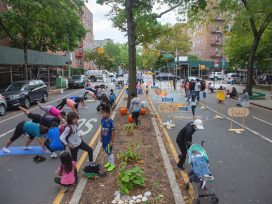
Once referring to natural resources and collectively managed land, the notion of the ‘commons’ has expanded across cultural, scientific and digital realms. Can commonality dodge the threat of capitalist exploitation and develop into an organizational principle for complex societies?
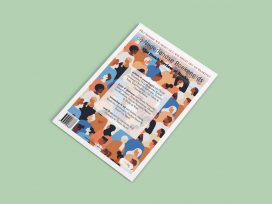
On making commons concrete
The Dutch Review of Books 2/2021
‘The Dutch Review of Books’ presents: the commons, vying for legitimacy between state and capitalism; the void of societal responsibility for #MeToo; and African oral traditions evident in rap music.
